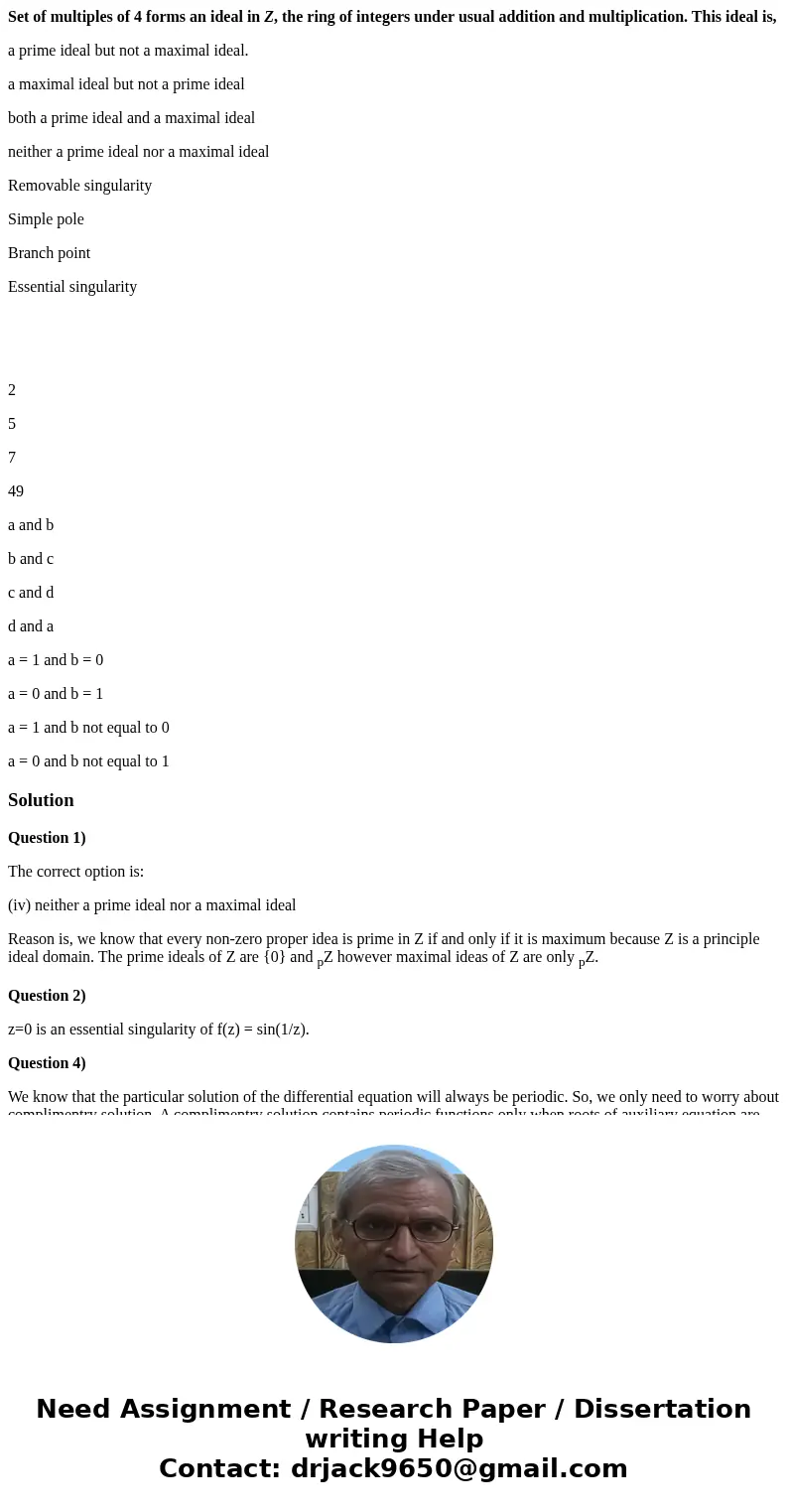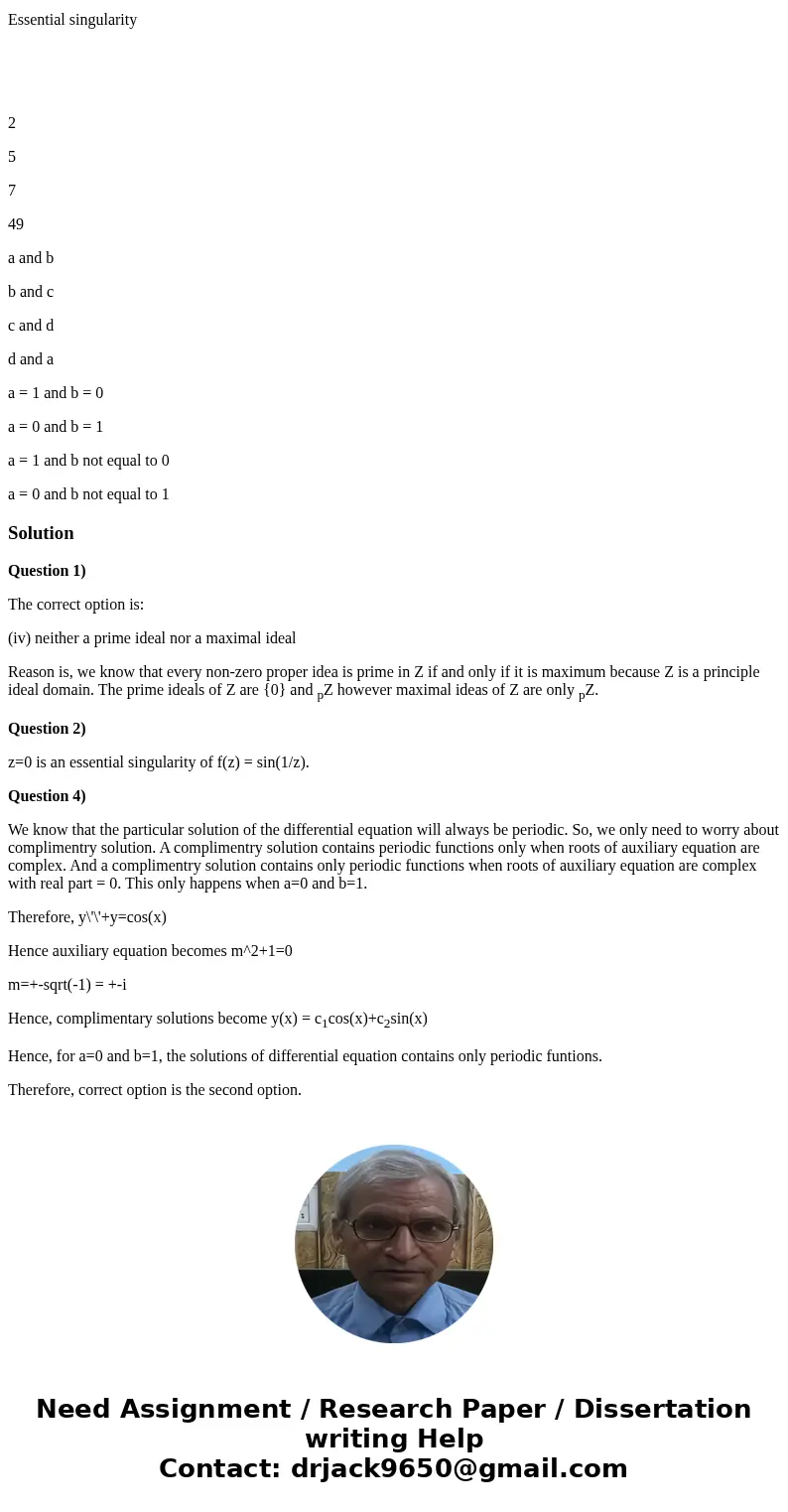Set of multiples of 4 forms an ideal in Z the ring of intege
Set of multiples of 4 forms an ideal in Z, the ring of integers under usual addition and multiplication. This ideal is,
a prime ideal but not a maximal ideal.
a maximal ideal but not a prime ideal
both a prime ideal and a maximal ideal
neither a prime ideal nor a maximal ideal
Removable singularity
Simple pole
Branch point
Essential singularity
2
5
7
49
a and b
b and c
c and d
d and a
a = 1 and b = 0
a = 0 and b = 1
a = 1 and b not equal to 0
a = 0 and b not equal to 1
Solution
Question 1)
The correct option is:
(iv) neither a prime ideal nor a maximal ideal
Reason is, we know that every non-zero proper idea is prime in Z if and only if it is maximum because Z is a principle ideal domain. The prime ideals of Z are {0} and pZ however maximal ideas of Z are only pZ.
Question 2)
z=0 is an essential singularity of f(z) = sin(1/z).
Question 4)
We know that the particular solution of the differential equation will always be periodic. So, we only need to worry about complimentry solution. A complimentry solution contains periodic functions only when roots of auxiliary equation are complex. And a complimentry solution contains only periodic functions when roots of auxiliary equation are complex with real part = 0. This only happens when a=0 and b=1.
Therefore, y\'\'+y=cos(x)
Hence auxiliary equation becomes m^2+1=0
m=+-sqrt(-1) = +-i
Hence, complimentary solutions become y(x) = c1cos(x)+c2sin(x)
Hence, for a=0 and b=1, the solutions of differential equation contains only periodic funtions.
Therefore, correct option is the second option.


 Homework Sourse
Homework Sourse